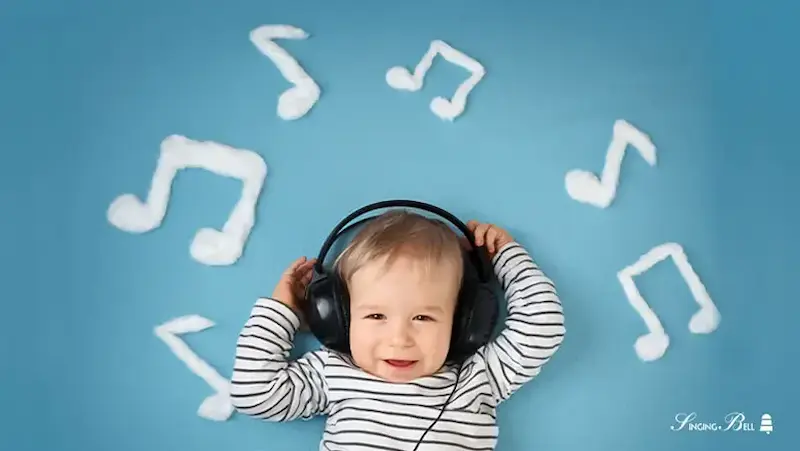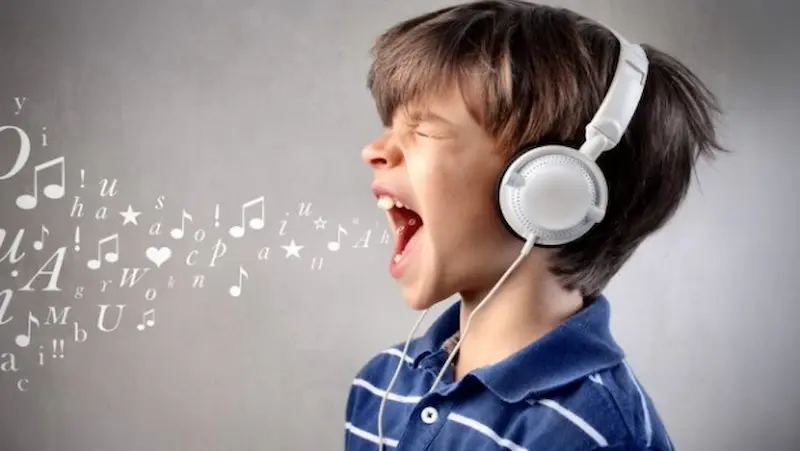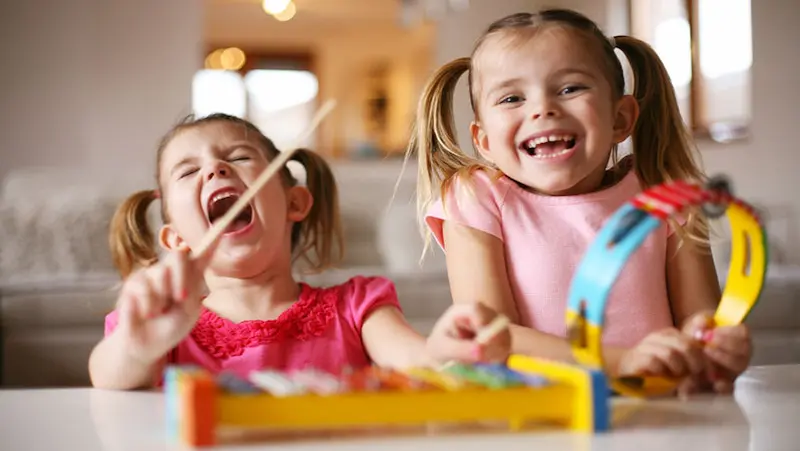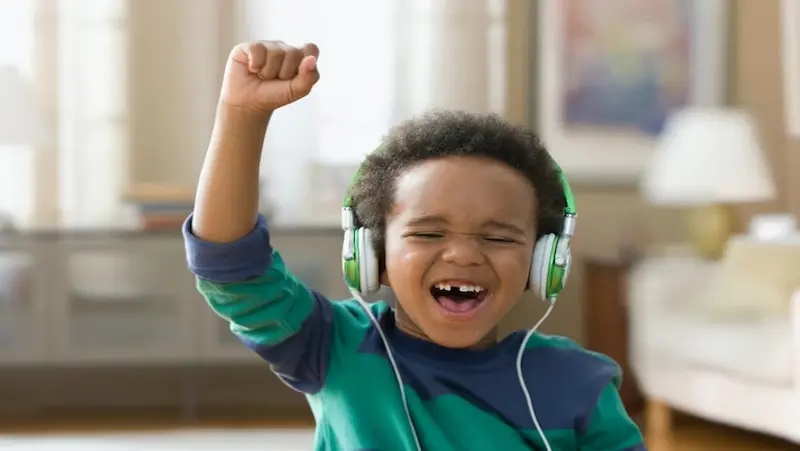Children’s music refers to a genre of music specifically created for and targeted towards young audiences, typically ranging from infants to pre-adolescents. This genre aims to entertain, educate, and engage children through age-appropriate content and musical elements.
Table of contents
- Introduction to Children’s Music
- Historical Evolution of Children’s Music
- Elements of Engaging Children’s Music
- The Role of Children’s Music in Early Education
- Iconic Figures in Children’s Music
- Music and Child Psychology
- Exploring Different Genres of Children’s Music
- Music as a Tool for Learning
- Music and Family Bonding
- The Influence of Technology on Children’s Music
- The Business of Children’s Music
- Cultural Diversity in Children’s Music
- Music Copyright and Licensing for Children’s Content
- Nurturing Young Musical Talent
- Organizing Musical Events for Children
- The Role of Parents and Educators in Children’s Music
- Music and Well-being in Adolescence
- Addressing Challenges and Controversies in Children’s Music
- Conclusion
- Frequently Asked Questions
Introduction to Children’s Music
Research has shown that music plays a vital role in a child development. It helps in enhancing cognitive skills, language development, emotional expression, creativity, and social interaction. Children’s music acts as a valuable tool for parents and educators to facilitate learning and foster holistic growth in children.
Children’s music differs significantly from mainstream music in terms of content, complexity, and approach. Children’s music often incorporates simple and repetitive lyrics, catchy melodies, and educational themes to appeal to young minds. It focuses on entertaining and educating rather than pursuing artistic expression or commercial success.
Historical Evolution of Children’s Music
1. Early Beginnings: Folk Songs and Lullabies
Children’s music has a rich historical legacy dating back to ancient times. Folk songs and lullabies have been passed down through generations, providing children with cultural insights and soothing melodies that aid in sleep and relaxation.
2. The Influence of Educational Movements on Children’s Music
During the 18th and 19th centuries, educational movements, such as the Kindergarten Movement, emphasized the importance of play and music in early education. Composers and educators began creating music specifically for young learners, laying the foundation for modern children’s music.
3. The Rise of Commercial Children’s Music in the 20th Century
The 20th century witnessed the commercialization of children’s music with the advent of recorded media and radio. Pioneering artists like Raffi, Ella Jenkins, and The Wiggles gained popularity by producing engaging, educational, and entertaining children’s music.

Elements of Engaging Children’s Music
· Catchy Melodies and Rhythms
Children are drawn to catchy tunes and rhythmic beats. Engaging melodies and lively rhythms are essential in capturing the attention of young listeners and encouraging them to sing, dance, and participate in musical activities.
· Simple and Repetitive Lyrics
Children’s music often features simple and repetitive lyrics that are easy for kids to learn and sing along with. Repetition helps reinforce learning and aids in memory retention.
· Incorporating Educational Content
Educational content, such as alphabet songs, counting rhymes, and songs about animals, shapes, and colors, adds value to children’s music. It fosters early learning and reinforces essential concepts in an enjoyable manner.
The Role of Children’s Music in Early Education
· Music in Preschool Curriculum
Incorporating music into preschool curricula has proven to be beneficial in developing various skills, including language, motor skills, and emotional expression. Music and movement activities help young children engage with the world around them.
· Enhancing Language and Communication Skills through Music
Singing and listening to music aid children’s language development, vocabulary expansion, and communication skills. The rhythmic patterns and repetition in children’s music assist in language acquisition and pronunciation.
· Music as a Tool for Cognitive Development
Children’s music stimulates cognitive development in children such as memory, attention, and problem-solving. It encourages creativity and imagination while supporting intellectual growth.
Iconic Figures in Children’s Music
· Pioneers and Trailblazers in the Industry
Throughout history, several iconic figures have played a significant role in shaping children’s music. Artists like Fred Rogers, Sharon, Lois & Bram, and Dr. Seuss have left a lasting impact on the genre and its influence on young audiences.

· Contemporary Artists Making a Mark
Today, a new generation of children’s music artists continues to inspire and entertain. Artists like Laurie Berkner, Dan Zanes, and They Might Be Giants have garnered popularity with their innovative and creative approach to children’s music.
· Analysis of Their Impact on Young Audiences
The impact of influential children’s music artists goes beyond entertainment. Their work has contributed to early learning, emotional regulation in kids, and cultural understanding in young listeners.
Music and Child Psychology
· The Psychological Benefits of Listening to Children’s Music
Children’s music has been linked to numerous psychological benefits, including reduced stress, improved mood, and enhanced emotional expression. Listening to music can also serve as a form of self-regulation for children.
· Using Music Therapy for Children with Special Needs
Music therapy has proven effective in supporting children with special needs, such as autism spectrum disorders and developmental delays. It can enhance communication, social skills, and sensory integration.
· The Effect of Music on Emotions and Behavior
Children’s music can evoke a range of emotions in young listeners. Happy, upbeat tunes can uplift moods, while calming melodies can soothe and relax children during challenging moments.
Exploring Different Genres of Children’s Music
1. Classical Music for Kids
Introducing classical music for kids through child-friendly adaptations of famous compositions by renowned composers like Mozart, Beethoven, and Tchaikovsky. These adaptations feature engaging storytelling and colorful instrumentation to captivate children’s imagination.
2. Rock and Pop Tunes for Young Audiences
Children’s music influenced by rock and pop genres, featuring upbeat and catchy tunes with positive messages. Popular artists like Laurie Berkner and They Might Be Giants create fun-filled songs that appeal to older children and tweens.
3. Folk and World Music Adapted for Children
Bringing diverse cultures and traditions to young listeners through folk and world music adaptations. Children’s songs from various regions, such as African, Asian, and Latin American cultures, are incorporated into fun and educational music experiences.
4. Jazz for Kids
Introducing children to the vibrant world of jazz with child-friendly jazz renditions. Jazz for kids combines playful melodies, scat singing, and lively rhythms to provide an enjoyable and educational introduction to this iconic genre.
5. Country and Bluegrass for Children
Children’s music inspired by country and bluegrass genres, featuring storytelling lyrics, acoustic instruments, and toe-tapping rhythms. This genre introduces children to American musical traditions and rural culture.
Music as a Tool for Learning
Children’s music has been effectively used to teach various subjects, such as science, history, and geography. Catchy songs with educational content make learning engaging and memorable.
Music can enhance early literacy skills by introducing children to phonetics, rhyming, and storytelling. Songs and nursery rhymes aid in the development of reading readiness.
Integrating STEM (Science, Technology, Engineering, and Mathematics) or STEAM (including Arts) concepts into children’s music sparks curiosity and interest in these fields. Educational music helps bridge the gap between entertainment and learning.

Music and Family Bonding
· Sing-Along Activities for Parents and Children
Engaging in sing-along activities with children strengthens the parent-child bond and promotes social interaction. Singing together creates cherished memories and enhances the emotional connection between family members.
· Creating Musical Memories Together
Music can be an integral part of family traditions and celebrations. Families can create musical memories through bedtime songs, holiday tunes, and special occasions.
· Family-Friendly Concerts and Events
Attending family-friendly concerts and music events provides opportunities for shared experiences and exposes children to live performances, fostering an appreciation for music and the arts.
The Influence of Technology on Children’s Music
The digital age has transformed the accessibility and distribution of children’s music. Online platforms and streaming services offer a vast array of children’s songs and albums, making it easier for parents and educators to curate age-appropriate playlists.
Educational apps and games engage children with interactive musical experiences, promoting learning through play. These apps often feature music theory lessons, virtual instruments, and music-making activities. While technology has expanded opportunities for children’s music exposure, it is essential to balance screen time with active engagement, such as singing, dancing, and playing real instruments.
The Business of Children’s Music
· Major Record Labels and Independent Artists
The children’s music industry comprises major record labels as well as independent artists and creators. Independent artists play a vital role in introducing diverse and innovative content to the genre.
· Challenges and Opportunities in the Industry
The children’s music industry faces challenges in standing out amidst mainstream music and navigating copyright and licensing issues. However, the growing demand for high-quality, educational content presents promising opportunities.
· Marketing Strategies for Children’s Music
Effective marketing strategies, such as targeted advertising, partnerships with educational institutions, and engaging social media campaigns, help promote children’s music to the right audience.

Cultural Diversity in Children’s Music
Cultural diversity in children’s music embraces a rich tapestry of music from various cultures and regions worldwide. It introduces young listeners to the beauty and uniqueness of different musical traditions, instruments, and rhythms.
Celebrating multilingual music for kids fosters language learning and cultural appreciation, as songs in different languages create a sense of global understanding. Moreover, promoting inclusivity and representation in children’s music ensures that diverse voices and experiences are reflected, encouraging a sense of belonging and acceptance for all young audiences.
Through cultural diversity in children’s music, children can embark on a melodic journey that enriches their musical experience and broadens their horizons.
Music Copyright and Licensing for Children’s Content
In the realm of children’s content, music copyright and licensing are critical aspects for artists and producers to consider. Respecting copyright laws ensures that original music is protected from unauthorized use or distribution.
Licensing music for educational purposes allows educators to use children’s music legally in schools and educational programs. Moreover, safeguarding children from inappropriate content is essential, as it ensures that the music they access is age-appropriate and free from harmful messages. By adhering to copyright regulations and licensing music responsibly, creators can provide children with safe and enriching musical experiences.
Nurturing Young Musical Talent
Nurturing young musical talent involves supporting children who show an interest in music. Parents can encourage and provide opportunities for musical exploration and practice. Enrolling children in music schools and programs offers structured learning and skill development.
It is essential to strike a balance between music and other activities, allowing children to explore diverse interests while fostering their passion for music. By offering a supportive and balanced approach, parents can help young musical talents thrive and grow into accomplished musicians.
Organizing Musical Events for Children
· Planning Children’s Music Festivals
Organizing children’s music festivals brings communities together and offers a platform for artists to showcase their work.
· Music Workshops and Summer Camps
Music workshops and summer camps provide immersive and enriching experiences for children to explore music and develop their skills.
· Concerts in Schools and Community Centers
Bringing live concerts to schools and community centers enhances children’s exposure to musical performances.

The Role of Parents and Educators in Children’s Music
· Parents as Music Mentors
Parents can actively engage with children’s music, singing, and playing instruments together to foster a love for music. Its also a part of positive parenting method.
· Teachers Integrating Music into the Classroom
Educators can enhance their teaching methodologies by incorporating music into classroom activities and lessons.
· Encouraging Lifelong Musical Learning
Promoting a lifelong love for music encourages children to continue their musical journey into adulthood.
Music and Well-being in Adolescence
As children grow into adolescence, their musical preferences may shift towards mainstream genres while retaining the benefits of early exposure to children’s music.
Listening to music continues to be an emotional outlet for teens, helping them navigate through the complexities of adolescence. Adolescence is an excellent time for young people to explore various musical genres and discover their personal tastes.
Addressing Challenges and Controversies in Children’s Music
· Censorship and Parental Advisory Concerns
Balancing age-appropriate content and creative freedom while addressing parental concerns is a challenge in children’s music.
· Balancing Entertainment with Educational Value
Striking a balance between entertainment and educational value is essential for successful children’s music.
· Addressing Gender and Cultural Stereotypes
Children’s music should avoid perpetuating harmful stereotypes and encourage diversity and inclusivity.
Conclusion
Children’s music plays a crucial role in early development, fostering creativity, learning, and emotional expression.
As the genre continues to evolve, the focus on producing high-quality, thoughtful, and diverse content remains essential for the well-being and growth of young listeners. By embracing the power of music, parents, educators, and artists can collectively shape a harmonious and enriching playtime experience for children across the world.
Join the revolution in education with Brightchamps. Our courses in robotics, coding, and financial literacy empower kids to become confident and capable learners.
Frequently Asked Questions
A1. Children’s music is suitable for infants to pre-adolescents, typically ranging from 0 to 12 years old.
A2. Yes, music can help improve a child’s language skills by enhancing vocabulary, pronunciation, and language acquisition through rhythm and repetition.
A3. Exposing children to classical music can stimulate creativity, enhance listening skills, and foster an appreciation for the arts and cultural heritage.
A4. Parents can find appropriate and safe children’s music content by using reputable streaming platforms, checking age-appropriate ratings, and reviewing song lyrics and themes.
A5. It is advisable for children to learn to play musical instruments as it fosters cognitive development, discipline, self-expression, and enhances overall well-being.
A6. Technology can be integrated responsibly by using educational apps, interactive music games, and monitoring screen time to ensure a balanced and engaging musical experience.


 We are an army of educators and passionate learners from BrightChamps family, committed to providing free learning resources to kids, parents & students.
We are an army of educators and passionate learners from BrightChamps family, committed to providing free learning resources to kids, parents & students.







